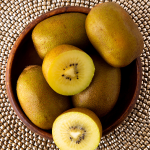Everything You Need to Know About Plums
Plums stand out with their delicious taste, vibrant colors, and extensive health benefits. Not only are they a delight to the palate, they're a versatile addition to many dishes. In fact, they are used in cuisines around the world. Here’s what you need to know about this tasty fruit and how to use it in your next meal.

 Strawberries
Strawberries Avocados
Avocados Sweet Cherries
Sweet Cherries.png) Mangos
Mangos Golden Kiwifruit
Golden Kiwifruit
 Mandarin Oranges
Mandarin Oranges







